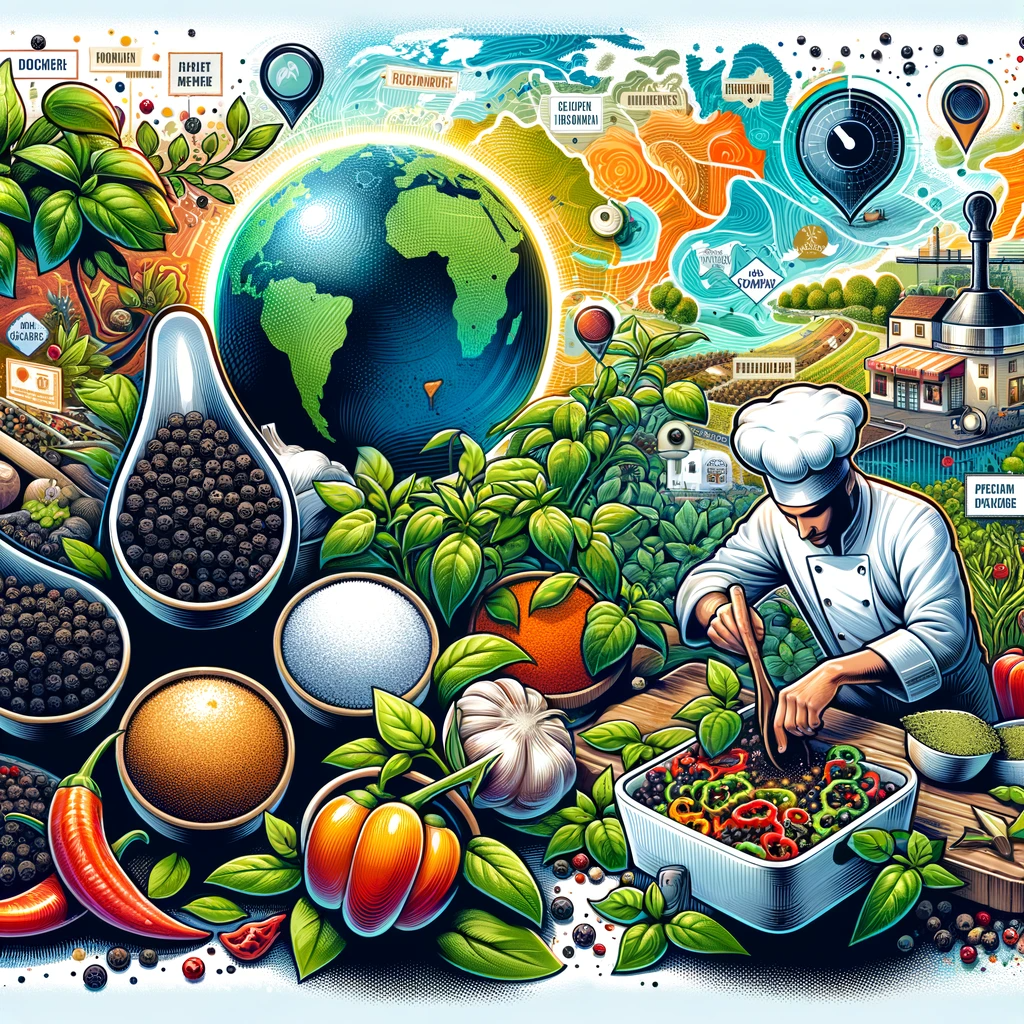Introduction
Mexican cuisine is renowned for its bold flavors, vibrant colors, and diverse ingredients. One of the key elements that contribute to the unique taste of Mexican food is the use of peppers. In this article, we will explore the various types of peppers used in Mexican cuisine and how they enhance the flavors of this ethnic cuisine.
The Spice of Life: An Overview of Peppers
Peppers, also known as chilies or capsicums, are a fundamental ingredient in Mexican cooking. They come in various shapes, sizes, colors, and heat levels. Here are some of the most commonly used peppers in Mexican cuisine:
Jalapeño Peppers
Jalapeños, named after the Mexican town of Jalapa, are one of the most recognized peppers globally. They have a moderate heat level and are often used fresh or pickled in dishes like salsa and nachos.
Serrano Peppers
Serrano peppers are slightly hotter than jalapeños and are frequently used to add a kick to dishes such as guacamole and pico de gallo.
Poblano Peppers
Poblano peppers are mild and have a rich, earthy flavor. They are the star of the famous dish ‘Chiles Rellenos,’ where they are stuffed with cheese, meat, or beans.
Habanero Peppers
Habanero peppers are fiery hot and are used sparingly due to their intense heat. They add a distinctive spiciness to salsas and hot sauces.
Ancho Peppers
Ancho peppers are dried poblano peppers, known for their smoky and slightly sweet flavor. They are a key ingredient in mole sauces, contributing depth and complexity.
Chipotle Peppers
Chipotle peppers are smoked and dried jalapeños, delivering a smoky, spicy flavor. They are used in marinades and as a seasoning in various Mexican dishes.
Guajillo Peppers
Guajillo peppers are mild with a slightly sweet taste. They are commonly used in adobo sauces and stews, providing a warm, fruity flavor.
Pasilla Peppers
Pasilla peppers, also known as “little raisin,” are mild and have a deep, rich flavor. They are frequently used in enchilada sauces and salsas.
Peppers and Mexican Culinary Traditions
The use of peppers in Mexican cuisine dates back centuries to the Aztec and Mayan civilizations. Peppers were not only used for their flavor but also believed to have medicinal properties. Today, they are an essential part of Mexican culinary traditions and are used in various forms:
Fresh Peppers
Fresh peppers are used in salsas, salads, and as garnishes. They provide a burst of flavor and heat that enhances the overall taste of the dish.
Dried Peppers
Dried peppers, such as ancho and chipotle peppers, are rehydrated and used to make sauces and marinades. They impart a deep, smoky flavor to dishes.
Pickled Peppers
Pickled jalapeños and serrano peppers are common toppings for tacos and sandwiches. They add a tangy and spicy element to the dish.
Health Benefits of Peppers
Besides their culinary uses, peppers offer several health benefits:
Rich in Vitamins
Peppers are a great source of vitamins A and C, which are essential for immune health and skin health.
Antioxidant Properties
Peppers contain antioxidants that help protect cells from damage and reduce the risk of chronic diseases.
Pain Relief
The capsaicin in peppers may help alleviate pain and reduce inflammation when used topically.
Conclusion
Peppers are a cornerstone of Mexican cuisine, contributing heat, flavor, and depth to a wide range of dishes. From mild poblano peppers to fiery habaneros, the diverse array of peppers allows Mexican cuisine to cater to various taste preferences. So the next time you enjoy a plate of delicious Mexican food, take a moment to appreciate the peppers that make it so flavorful and unique.
Incorporating peppers into your own cooking can be a rewarding experience, allowing you to experiment with different heat levels and flavors. Whether you’re making a spicy salsa or a smoky mole sauce, peppers are sure to elevate your culinary creations.
Remember to use caution when handling hot peppers, as their oils can cause skin and eye irritation. And, most importantly, enjoy the fiery, flavorful journey that peppers bring to Mexican cuisine.
